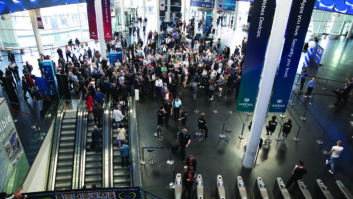
Alla Salehian, CEO of The International Media Associates (TIMA), explores the impact that technology is having on the media industry, with particular regard to newsgathering and distribution
We all know the media industry has seen monumental changes to operations, editorial workflow, newsgathering and distribution over the last decade. The main driver of this change has been the emergence of new technologies impacting content production and the rise of social media impacting publishing and content distribution. The barriers to entry for producing news content, for example, are no longer there. Individuals can now become journalists, photographers and videographers without the need for expensive equipment or professional operators. Similarly, the barriers for content distribution have also been removed with the rise of online video distribution platforms such as YouTube, and social media networks such as Facebook, removing the need for large network broadcasters to access viewers. So, in this brave new landscape, what impact does technology have on the media industry as a whole and on newsgathering and distribution in particular?
There are two main issues to address here. The first is how technology has changed traditional methods of newsgathering, content creation and distribution. The second is the impact that these changes have had on the broadcast industry and the shift in the balance of power.
There is no longer any doubt that newsgathering technologies, in the form of smartphones, tablets, digital SLR cameras, and cellular bonded back-pack systems – to name but a few – have increased the number of content producers and newsgatherers. In some cases, broadcasters have also come to depend on these ‘citizen journalists’ to generate content from parts of the world where they do not want to, or cannot, send professional journalists, raising obvious ethical and professional questions.
The major impact on broadcasters has been on traditional linear workflows connecting editors, producers and journalists. New technology means that the time it now takes to commission a news story, film the event, and edit and transmit the finished product is very short and journalists and newsrooms have had to adapt their workflows to accommodate this change in speed. Competing with citizen journalists and online delivery platforms for viewers’ attention has also added to the time pressure on traditional newsgathering practices. Content verification is a major problem for broadcasters especially given the time pressure to publish a story. Technology has provided some help with this process; location verification through GPS tracking, for example. Nevertheless, this function is still left to newsgathering professionals who look for clues in images and track the publisher of a story through social media trails.
The sheer volume of information and video content that is now being created and distributed has also generated the need for new storage technology to enable producers to sift through, organise, edit, tag, track and access news content at short notice. For newspaper and online video sites, this has meant that computer algorithms have now replaced the role of journalists in sifting through content, organising and ranking stories and updating content and news stories on front pages and headlines. It is not too far fetched to imagine a scenario where computer algorithms will, one day, select the most important news content that will generate the largest audience, as it is being filmed and uploaded, potentially removing the need for news editors altogether.
The challenge facing broadcasters in this new environment is how to navigate between the demands for reliable information on the one hand, and the speed with which their audience can now access news stories and video content on the other. Technology has made it easier and cheaper to produce and access a mass of information, but it is debateable whether it has increased our knowledge and awareness of the world or helped us to make sense of events. That has traditionally been the role of professional journalists, and computer algorithms cannot replace this function. As more and more people access news content online and form into online groups with common interests and agendas, so they will come to be the ones to set the news agenda in the future, and not traditional news editors.
Given the technical challenges facing broadcasters today, and the rise of the citizen journalist and publisher, it would be easy to conclude that the future is bleak for the broadcast industry. However, we must bear in mind that new technology is ultimately an enabler for content production, storage and consumption. The key is that relevant, well-produced content, which is adapted for distribution on broadcast, online, smartphone and tablet platforms and which can be stored and retrieved easily, will be vital for the survival of broadcasters.
Let’s take an example from the music industry. The iPod has revolutionised the purchase, storage and retrieval of songs and iTunes has become one of the main music distribution platforms. But while it now costs only £199 to buy an iPod Classic which can hold up to 40,000 songs, it will cost about £39,600 to fill it with music content.
The challenge – and opportunity – for broadcasters is not from the citizen journalist but from adapting to new and emerging technologies and using them to create compelling content that appeals to the mass and the niche audience. That means adapting workflows and changing established mindsets, which I would argue is a much bigger challenge.







